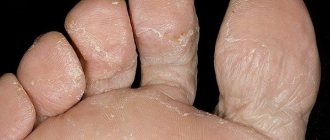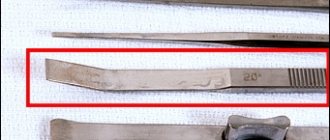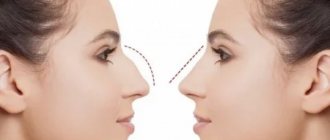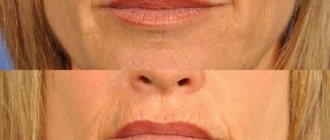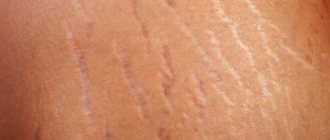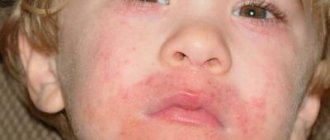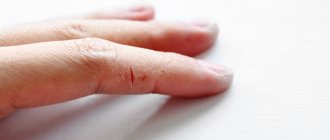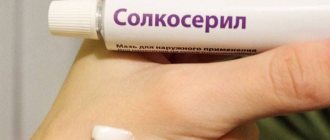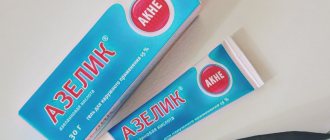Many dermatologist patients complain of quickly, within a few days, keratinization of the skin on their fingers. Since in the first period of the disease most people try to eliminate this defect on their own, using warm baths and rich creams, they see a doctor only when deep, painful cracks form on the skin. Hyperkeratosis is a general name for a whole group of diseases that cause this symptom, some of them are very serious. This disease is characterized by disruption of the epidermis, an increase in the layer of dead cells and the formation of areas covered with the stratum corneum.
Causes of hyperkeratosis
Excessive proliferation of skin surface cells has many causes, both mechanical and pathological. Rough skin on the fingers is often observed in people whose professions involve daily pressure on these areas, for example, shoemakers or guitarists. The areas of skin that come into contact with the strings become horny, forming a layer of cells and protecting the skin. Workers who constantly deal with resins, sand or tar suffer from excessive cell growth on the fingers and palms, and this is dangerous because the degeneration of such cells can cause a malignant skin disease.
Age-related changes in hormonal levels entail keratoderma: during menopause, some women develop skin layers on the palms and fingers, they are diffusely located and have a grayish or yellowish color. Sometimes keratinization becomes covered with deep, painful cracks. Senile lumps and plaques on the hands usually do not bother their owners, but there is a risk of such cells degenerating into cancer.
Horny skin on the fingers of children and adolescents is a symptom of a serious illness, so keratoderma is most often caused by a gene mutation. Provoking factors can be various viral diseases, hormonal imbalances, a lack of vitamin A in the body, and the cause of the deficiency can be both external and internal. Poor nutrition and diseases of the digestive system, cancer and metabolic disorders are the main reasons for incomplete absorption of vitamin A, which in turn provokes keratosis.
The cause of the proliferation of epithelial cells is sometimes an allergic reaction to a cosmetic product or washing powder. Excessive consumption of food allergens also causes the appearance of horny layers of cells.
MECHANISM OF KERAINIZATION IN NORMAL AND IN HYPERKERATOSIS
Normally, as a result of their vital activity, skin cells gradually move from the lower layer to the upper, while gradually accumulating keratin - a protein that makes them more durable and resistant to external influences. The top layer of skin is nothing more than completely keratinized cells or horny scales, which are peeled off and replaced with new ones during human life. Such cells lack viability, but at the same time, thanks to keratin, they provide protection to living cells located underneath them from negative environmental factors.
With the development of hyperkeratosis as a pathological condition of the skin
- on the one hand, there is an active accelerated division of epidermal cells that produce keratin;
- on the other hand, there is a delay in the process of normal physiological exfoliation of horny scales from the surface layer of the skin.
Symptoms of keratosis
First of all, a patient with keratoderma notices that he has rough skin on his fingers, and skin softening products do not bring the expected result. Then, after a sufficiently long period of time, the layer of cells becomes thick, the tissue underneath dies, and the edges of the stratum corneum acquire a purple tint. In the thickening itself, deep, painful, bleeding cracks form, the nails become lumpy and irregular in shape.
The symptoms of occupational or mechanical keratosis, which is the body’s response to local skin irritation, are much less pronounced. Constant pressure on the fingertips leads to the formation of calluses, and then the skin becomes coarser, the surface cells of the epidermis die off and do not slough off, as a result of which keratinization occurs. Occupational keratosis can also be accompanied by the formation of cracks in the stratum corneum, but it is limited only to those areas of the skin that are periodically injured, without spreading further.
Follicular keratosis most often forms on the flexor surfaces of the extremities, but can also be localized on the hands. The patient notices that the skin on his hands is pimply and tough. Follicular keratosis, apart from a cosmetic disadvantage, does not annoy the patient, but can spread throughout the body. One of the reasons for the occurrence of this form of the disease is heredity: according to statistics, people whose parents had a history of keratosis pilaris are most likely to develop it between the ages of fifteen and twenty-five.
Kinds
Manifestations of hyperkeratosis form on the legs, arms, torso, scalp, palms, and feet. Their location and appearance depend on the reasons for their appearance.
The most common types of thickenings are:
- Calluses, corns on the soles of the feet and palms. Formed in areas subject to prolonged friction or pressure;
- Actinic keratosis. Develops due to excessive exposure of the skin to ultraviolet rays. Appears as flat, rough patches of yellow, brown or red color;
- Follicular hyperkeratosis (“goose bumps”). This is a rash of small multiple tubercles on the face, shoulders, legs, and buttocks. It is caused by a violation of the exfoliation of dead skin particles. This form of hyperkeratosis occurs in children; it goes away on its own in adolescence;
- Warts. Occurs when infected with the human papillomavirus. They appear as convex growths of various shapes and sizes. On the feet they are called plantar warts;
- Under nail hyperkeratosis. This is a thickening of the skin in the area of the nail bed, nail folds, which is caused by injuries, psoriasis, and onychomycosis. It leads to lifting, bending, and deformation of the nail plate.
You can see what different types of hyperkeratosis look like in the photo on the Internet. Its manifestations also include skin changes in certain skin diseases - eczema, psoriasis, lichen planus, seborrhea.
Treatment of keratoses
Keratoses associated with the professional activities of patients with exposure to toxic substances, such as arsenic or tar, are difficult to treat until the person stops engaging in this type of activity. The disease can last for years and go away completely on its own when the employee quits or changes profession.
At the first signs of causeless coarsening of the skin on your fingers, you need to carefully adjust your diet, add vitamin complexes and an oil solution of vitamin A. Locally, thoroughly clean the skin on your hands every evening, lubricate the rough areas with a nourishing cream with the addition of vitamin A. A good result is achieved by using gloves Spa Belle, they moisturize the skin, have a soft and gentle effect, releasing softening and beneficial components of the gel impregnation. You can buy silicone gloves in the online store.
If the symptoms of keratosis are severe enough, you should consult a doctor for a full examination and identify the cause of the disease. It is possible that keratinization of the skin is caused by some disease, and its treatment will help eliminate the unpleasant symptom. Ointments and creams containing healing and softening components are used locally.
At any stage of the development of the disease during the inflammatory process, it is advisable to use ointments containing antibiotics and steroids. They are used in short courses to relieve inflammation, and then use wound-healing drugs such as Panthenol or Solcoseryl, which enhance tissue regeneration. Baths with astringent herbal decoctions and compresses with plantain or aloe juice are also quite effective in the symptomatic treatment of keratoses.
Why does it happen?
Hyperkeratosis is provoked by chronic inflammatory processes on the skin, infections, ultraviolet radiation, and exposure to aggressive chemicals. If the thickening has formed without prior irritation or injury, then it is probably caused by hereditary diseases.
Under the influence of external factors, and not internal diseases, hyperkeratosis most often affects the feet.
This is facilitated by:
- improperly selected shoes (tight, chafing, inappropriate in size, with heels, made of artificial materials);
- being overweight or tall, creating a lot of pressure on the foot;
- foot deformities (flat feet, club feet), gait disturbances;
- diabetes mellitus with loss of pain, tactile sensitivity of the lower extremities, impaired nutrition of foot tissues;
- fungal infection;
- deficiency of vitamins, minerals;
- dry skin;
- injuries;
- standing for long periods of time during the day.
A rather unpleasant, painful condition is hyperkeratosis on the heels. It leads to disruption of the integrity of the skin, the formation of cracks, and limits physical activity and ability to work.
On the skin of the hands, the cause of hyperkeratosis is often sports training (exercises on the horizontal bar, uneven bars, lifting weights, playing tennis, badminton), playing musical instruments (guitar). And also work without protective gloves in the garden, features of the profession (carpenter, painter, mechanic).
Prevention of keratosis
The main treatment for keratosis of any etiology is to prevent the development of the disease. But since it is not known for certain what triggers the onset of the disease, you just need to maintain general hygiene, not subject your hands to excessive stress, and take good care of them. Sagging skin on the hands, calluses and redness are a signal for immediate action: stopping any diet, taking vitamins A and E, and cosmetic procedures.
People whose professions involve the development of this disease, or who have had cases of this disease in their family, are advised to closely monitor their health, since keratosis, although it does not threaten human life, sometimes makes it unbearable. Horny skin reduces the sensitivity of the hands, interferes with delicate work, and cracks make any movement impossible due to extreme pain. The duration and, sometimes, failure of treatment for horny growths is a reason to think about preventive measures for an unpleasant disease.
Hands teasing illness
Before technology and so many tools were available, doctors looked at hands to determine their overall health. Modern tests and advanced techniques have caused doctors to ignore this situation.
If you know where and how to look, your hands will tell you everything. You see and use them every day. So, when was the last time you really looked at your hands?
The color and texture of our skin, the color of our nails and the shape of our fingers provide important information about our overall health. Let's see what diseases our hands reveal?
Red palms
Red palms may be a sign of liver disease. If your hands are redder than they should be, your liver is working hard.
When the liver does not function properly, it cannot eliminate toxins and the toxins multiply in the blood, causing rashes on the arms and legs. This condition is called palmar erythema.
Due to the increased blood flow in pregnant women, the vast majority of them have red palms, and in this case there is nothing to worry about. Red palms, eczema
This may also be a sign of an emerging or regional allergy.
Swelling of hands and fingers
Sometimes there may be a slight swelling on the hands. But sometimes situations can arise that cause our joints to strain and burst.
In such cases, we find it difficult to carry out our daily work. If we experience swelling in our hands while resting, it may be a sign of kidney or liver disease.
If this situation is limited only to your hands, then your thyroid gland is working less. Thyroid
Other symptoms of underperformance include weight gain, dry hair and depression. You can find out if you have hypothyroidism by taking a blood test.
Other causes of swollen hands; This may also include eating salty foods, traveling and the premenstrual period.
Blue or white fingertips
Fingertips turn blue or white after touching something cold. Raynaud's disease
could be a sign.
This condition, which affects women more often than men, is completely harmless. This causes the fingers and toes to become pale and may cause numbness and tingling.
Although the exact cause of this disease is not known, experts believe that it is caused by decreased blood circulation in the veins.
If you have Raynaud's disease, wear gloves or avoid touching cold objects in cold weather. A persistent blue color to the finger may indicate lung or heart disease.
Handshake
If your hands are shaking uncontrollably, don't panic. There may be a simple explanation for your shaking hands. Too much caffeine.
Some medications, such as asthma medications and antidepressants, can also cause tremors. If none of these reasons explain your shaking hands, it is recommended to see a doctor.
Less common causes of hand tremors may include Parkinson's disease and a nervous system disorder that affects movement.
Cracked and weak nails
If your nails look sensitive like glass, you may have a zinc deficiency
May be. Zinc helps skin cells grow and repair.
You can get rid of this situation by eating foods rich in zinc. The best sources of zinc are oats, nuts and meat.
Peeling skin
If your fingertips are cut off, you may have a vitamin B deficiency. Vitamins niacin (B3) and biotin (B7) are essential for healthy skin.
It can promote healthy skin and nail growth by taking biotin supplements; With niacin supplements, you can prevent melanin formation, speed up collagen production, and repair skin.
Foods rich in niacin, that is, vitamin B3: fish, peanuts and mushrooms. Foods rich in biotin include avocados and tuna.
Dryness and itching
If a cream or lotion cannot prevent dry and itchy hands, you may have a skin condition such as eczema. In this case, you can consult a doctor and use a strong cream.
If your doctor determines that you don't have eczema on your hands, you just have dryness. Vitamin A
Eat foods that contain it. Repeated hand washing sessions and drying with hard materials can cause your hands to become more dry than necessary.
Also use vitamin E to remove dead skin around your nails at night. Since hand washing is not allowed at night, the creams used penetrate the skin better.
Yellow and white nails
This type of color change may be a sign of anemia because red blood cells, which carry oxygen to cells, are not produced in sufficient quantities. You can check for anemia by doing a routine blood test, and you can correct it with iron supplements.
White nails can be a sign of liver disease, while yellow nails can be a sign of diabetes and fungal disease. Half pink, half white nails mean kidney disease. If the nail bed is white, it could be anemia, and if the nail bed is red, it could be heart disease.
Flexible nails
Soft and pliable nails lack of protein
indicator. The most obvious signs of hypocalcemia are brittle nails, dry skin and bulging hair due to low calcium levels. Food sources rich in calcium include fish, sardines and spinach.
Dark streaks
If you notice dark lines and spots under your nails, see your doctor immediately. Dark lines under the nails, although rare, can be a sign of skin cancer.
Treatment approach in our clinic
At our clinic, specialists have developed a special approach to treating this disease. After a thorough examination of the patient (including an MRI), a comprehensive treatment is prescribed, which includes:
- modern developments in medical science: the latest medications and regimens for their use, physiotherapeutic and other non-drug methods that eliminate the main manifestations of the disease and suppress its progression;
- Traditional oriental methods influence the body as a whole, restoring the functioning of all its organs and systems, which leads to the suppression of the pathological process in the joints.
This combination allows you to quickly and painlessly relieve the patient of all unpleasant symptoms, and then suppress the progression of the disease and restore joint function. Details about the treatment methods used can be found on our website.
We combine proven techniques of the East and innovative methods of Western medicine.
Read more about our unique method of treating arthritis

